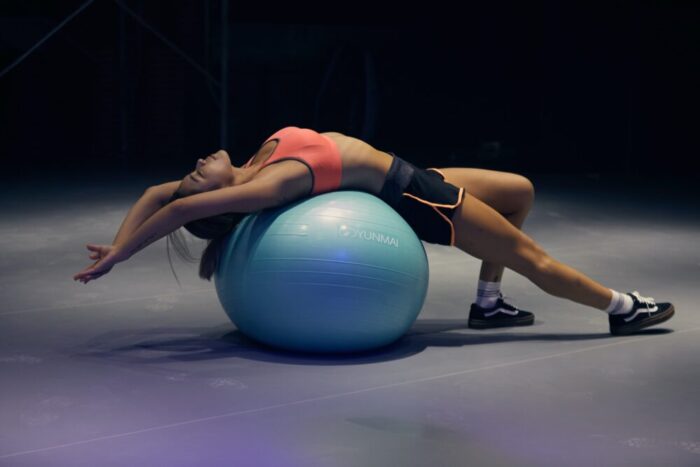Metabolism is a complicated process in which the calories in the food and beverages you consume interact with oxygen to release the energy your body requires to function. In order for the organism to function normally, it needs basic nutrients and energy (from food and drinks). The amount of energy that the body burns is directly affected by metabolism.
Many different factors affect fast or slow metabolism (gender, age, genetics, hormones …). A slowed thyroid gland can reduce the metabolism, which, by the way, slows down with age, and the main culprit for that is inactivity. When the body has more muscles, it expends more energy, so you encourage faster basal metabolism (metabolism at rest).
Table of Contents
Metabolic Processes

According to metabolic reactions, metabolism is divided into two processes: anabolism and catabolism.
- Anabolism (composition) is a process in which energy is used to build new cells and tissues. Anabolism is fed by the energy obtained in the process of catabolism.
- Catabolism (decomposition) is the process of breaking down large molecules in the body into smaller units of energy. When you are stressed, tired, or sleep-deprived, muscle catabolism occurs. All these bad aspects lead to loss of muscle mass and an increase in body fat.
Once you determine your metabolic type, it will be much easier for you to make an exercise and diet plan. In order for the effect of your work to be positive and to avoid the mistakes that a lot of people make, it is best to have a personal trainer.
How Exercise Affects Metabolism

Exercise is a powerful driver of metabolism. At rest, women burn more carbohydrates and less fat than men. With age, muscle mass is naturally lost, which slows down the metabolism. You can stop this process by exercising. The ideal combination to achieve the desired results is a training plan and a balanced diet.
- Aerobic exercises such as power walking, cycling, and swimming are most effective at burning calories. By applying various exercises, you speed up your metabolism, so that you lose calories for hours after training.
- Strength training increases muscle mass (prevents muscle loss), muscles burn more calories and thus maintain metabolism as you age. It is great for your health and fitness, stimulates basal metabolism, and thus maintains the work of vital organs, lungs, heart, muscles, intestines, skin …
- The combination of strength training with aerobic exercises is an ideal combination for achieving the best results, but also for long-term weight maintenance. For training to be effective, the advice is to consult a professional trainer and thus avoid beginner mistakes, injuries, and the feeling that your efforts are in vain.
In the continuation of the article we will talk about the last mentioned training plan, hence the title “4 Exercises That Will Set Your Metabolism on Fire in 20 Minutes”.
Exercises According to the System “As Many Repetitions as Possible”

It may sound unrealistic to you, but the next 4 exercises according to the system of “as many repetitions as possible” will activate the consumption of oxygen even after training, which means that long after the end of the training, calories will continue to burn.
“As many repetitions as possible” is the best and most efficient system for those who don’t have much time for training. Work out during the scheduled time of 20 minutes, with as little rest as possible, and if you have done everything and still have not completed 20 minutes – add an extra set, to complete the training.
We advise you not to rush into exercising, so as not to ‘burn out’ too quickly. Start the first set with two repetitions of each exercise, to feel the movements, before adjusting the speed and rest time to do house chores, text someone, spin a roulette wheel at one of your favorite online casinos at TopCasinoExpert.com, or similar.
We recommend the use of weights or dumbbells. If you don’t have them at home, then find something that you can catch nicely, to do the following exercises. Do 20 repetitions of each exercise, and the number of sets should be as large as possible, within a time frame of 20 minutes. Set up the stopwatch because – it is time to burn the fat!
1. The dumbbell push (20 reps)
This is the first exercise to set off the metabolism. You stand, your legs are put together, and your arms outstretched in front of you so that your thumbs are touching. Squat and open your arms and legs as far as you can. Make sure your wrists are leveled with your shoulders. Jump to the starting position and start doing repetitions in speed.
2. The dumbbell push (10 repetitions for both arms)
You are standing, your feet are slightly apart and parallel, and the dumbbell is in between. Squat and grab the dumbbell with your right hand, stand up, and hold the dumbbell in front of you, in parallel with your right shoulder. Hold for one second, then push your hand with the dumbbell over your head, straight. Return to the starting position and do nine more repetitions, then move to the left arm.
3. Butterfly crunch (20 reps)
Lie on the floor with your arms placed above your head and your legs bent at the knees slightly, so that your feet are both together. Quickly raise the torso to a sitting position and reach for the ankles with both hands. Then slowly lower yourself back. Try to be stable during all repetitions.
4. The dumbbell jerk (10 reps for both arms)
Hold the dumbbell in your right hand and squat until your thighs are completely parallel to the floor. You lift your hips and knees, and when the dumbbell is at shoulder height, in front of you, use the momentum to lift it above your head. Do 10 reps with one hand, then change sides.

Leave a Reply